Tips that save time.
Just a week ago or so, I published an article on whether or not sending spam works for grey-area entrepreneurs. Just in case you missed it and you don’t feel like reading it right now, let me just say that in conclusion, spam works and brings serious profits.
Anyway, I decided to follow up on the topic and point out some specific types of spam we’re attacked with on a daily (again, that’s daily) basis. I’m publishing this list as a kind of a strange resource just to keep us on our toes when going through our inboxes.
Now, the list has a particular order. I start off by pointing out the types of spam that have the best chance of tricking us, and then move on to some of the more obvious ones.
1. “Delivery fail” spam
The idea of this type of spam mail is to pretend that it’s sent from your email delivery server as a result of a failed messaging attempt on your part.
For instance, in a genuine situation, when you try emailing a nonexistent email address, your server will return the message to you along with a mail delivery failure header.
What spammers try to do is send fake such notices and attach a malicious file pretending to be the original message. So when you open this attachment, you get a virus.
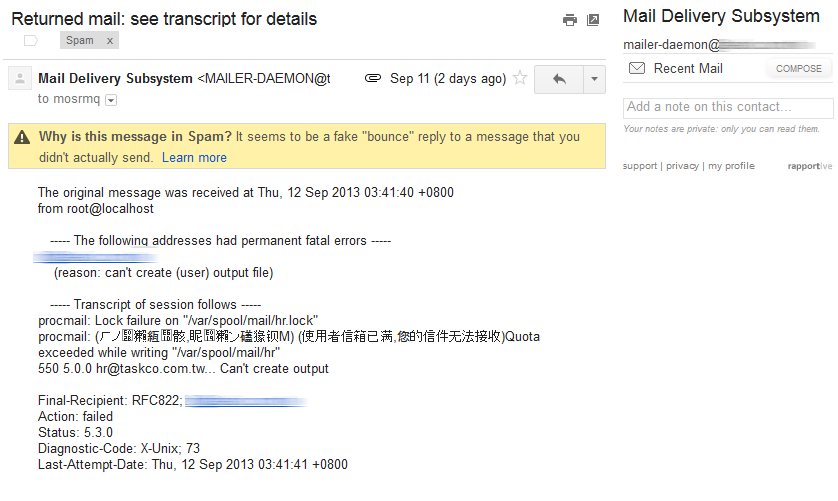
A general rule is to simply not open any failed delivery notifications if you can’t recall sending the email in the first place.
2. Sneaky spam
Sneaky spam is when the spammer uses a common social media notification subject to lure you into opening the email. Here’s an example:

The “You Have: [1] Unread Message” is probably the perfect book example of a sneaky subject line. The link inside the email is, of course, a fraudulent one.
And one more thing. I encourage you to click the spam button on anyone who sends such emails, even if it’s someone you initially opted in to get messages from.
3. The “Re:” trick
This is one of the older approaches in email spam, but it’s still easy to get tricked by it.

The subject line is just meant to convince us that we are the ones who initiated the conversation. Then, if we open the email, the author moves on to something completely unrelated right away (usually to some offer).
4. PayPal spam and other payment-related spam
PayPal spam is when a spammer pretends to be PayPal and emails you about some changes in your account or some new transfers that need to be “authorized.” If you do get tricked and click the link in the email, you will be redirected to a fake PayPal site that’s been set up to steal your login and password.
Other payment-related spam messages work the same way, but there’s just no direct mention of any specific payment processor.
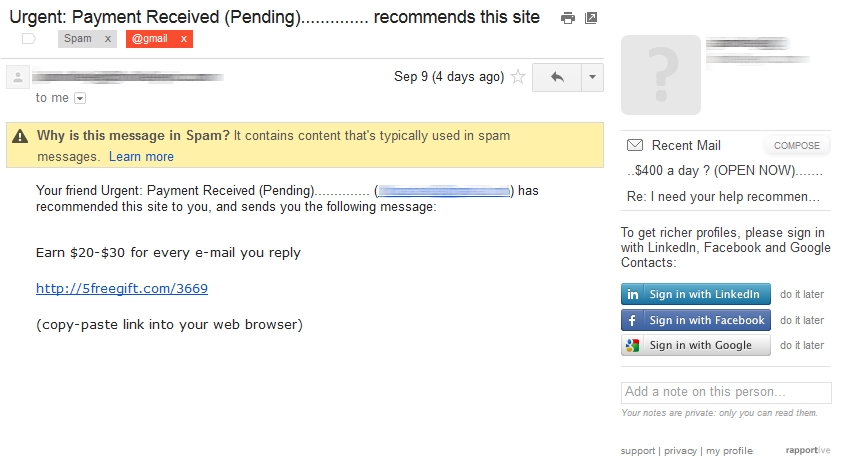
5. General outreach spam
Every once in a while, you will get some poorly targeted email outreach. Like I did a couple of weeks ago; the screen I shared last time:

This type of spam could actually work if only the spammer had done a better job at researching who are they sending the email to.
6. General affiliate crap spam
I really have nothing against affiliate marketing, but some stuff that people send out is just plain ridiculous. Like this thing, for example:

The way this sort of email gets created is fairly simple: (1) start with an unbelievably world-changing headline, and (2) promote some crappy affiliate offer right away.
7. “Biz op” spam
Very similar to affiliate spam, only the headline is more down-to-earth and the message usually tries to point us directly to a given site instead of using an affiliate gate.
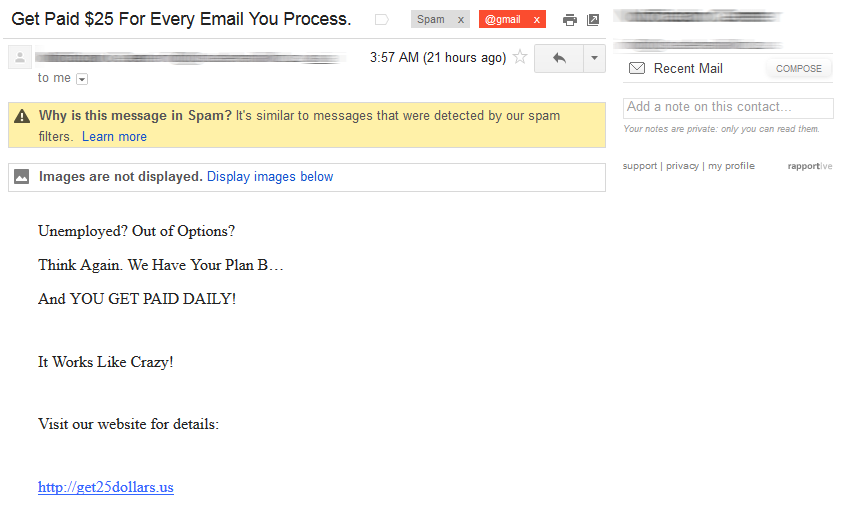
The main principle is still the same though: Make some money without breaking a sweat.
8. Fake gifts and prizes
The story is always the same … “Hey you won something, click here to collect the prize!”
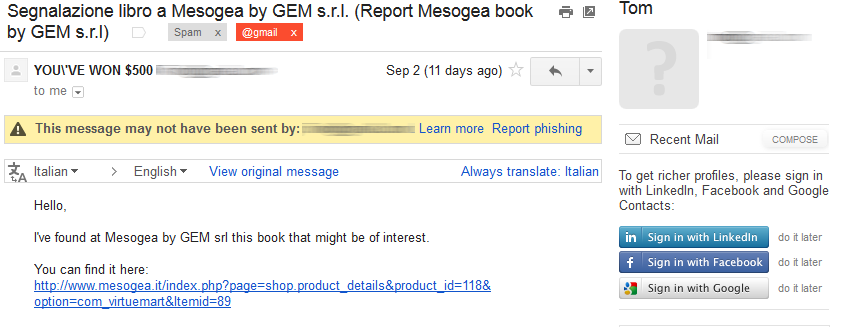
‘Nuff said.
9. Rolex spam
You’re likely to receive a handful of those every month. Rolex spam is still one of the big three most profitable spam markets (something I talked about in the previous post).
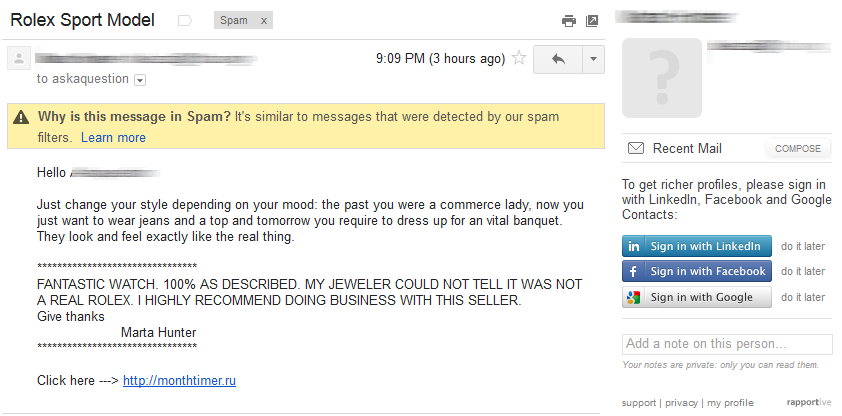
10. The old school of spam
The old school of spam is about stuff like Viagra and porn. This never gets old. And although these two are the most profitable spam markets, I don’t think that it’s because people get tricked into clicking the links inside the emails.
It’s much more probable that one in a couple of million recipients is simply in need of some pills or entertainment, and they click on the links consciously.
(Sorry, no screenshot here…)
11. ?
That’s it for my list. If you have any ideas for no. 11, don’t hesitate to let me know.
2 Comments
Comments are closed.




With years of using e-mail, I mastered the spam game. Into the spam folder they go within a minute of flooding my inbox.
wow amazing research.. It is a very good and informative post for me.
thx dude.. http://eduspy.net